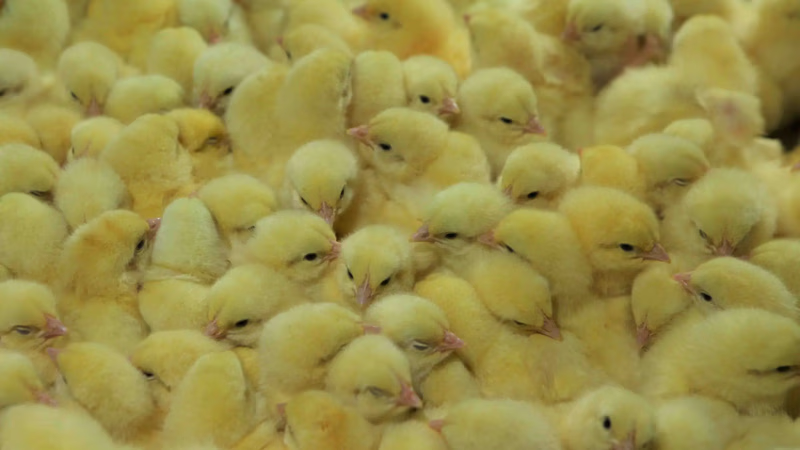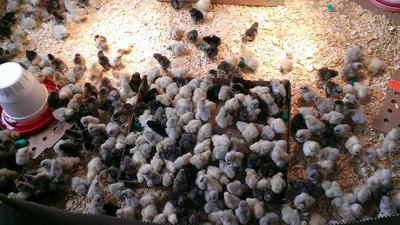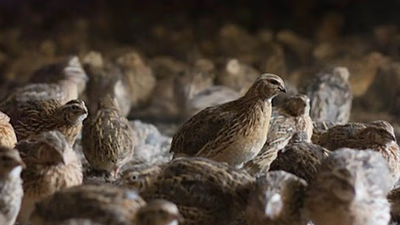
Poultry trade insights: chickens and quails in West Asia.
The consumption and buying and selling of poultry and chickens in the countries of West Asia and the Middle East is diverse due to the cultural and economic diversity in these regions. Factors such as consumption habits, culture, rules and regulations related to the poultry industry, economic and political situation, import and export and other market factors can affect the prosperity of the consumption market and purchase and sale of poultry and chickens in these areas.
- As one of the main and widely used products in the poultry industry in these regions, chicken has a strong consumer market. Fresh and frozen chicken, eggs and processed chicken products (such as nuggets, nuggets and sausages) are sold widely in the consumer markets of these regions.
- As a special and popular poultry in West Asia and the Middle East, quail has a significant consumption market. Quail meat , quail eggs and processed products thereof (such as salted quail eggs and packaged quail eggs) are used in these areas.
- Turkey also has a high consumption in the markets of West Asia and the Middle East. Turkey meat and its processed products (such as turkey nuggets and sausage) are used as healthy and high-protein options in these areas.
- Poultry, such as ducks and geese, also have a good consumption market in some countries of West Asia and the Middle East . Duck and goose meat are used as delicious and different options with chicken meat in some high-end restaurants and kitchens.
- Ostrich, as a special poultry, has a small consumption market in some countries of these regions. Ostrich meat and oil can be found in some restaurants and local markets.
Some of the countries that are usually active in this field and can be introduced as the largest importers and exporters of poultry and chickens in the Middle East are:
- Saudi Arabia is one of the largest importers of poultry and chickens in the Middle East. This country imports poultry on a large scale due to its high population and the need to provide food.
- The United Arab Emirates is one of the largest markets for the import and export of poultry and chickens in the Middle East. Due to the development of the tourism industry and population growth, the need to supply food and poultry products has increased in this country.
- Oman is also one of the countries active in the export of poultry and chickens in the Middle East. Due to its rich natural resources and industrial development, this country exports its poultry products to other countries.
- Turkey also plays an important role in the export and import markets of poultry and chickens in the Middle East. This country acts as a commercial bridge between the Middle East and Europe due to its convenient geographical location and infrastructure.
- Iran is also one of the countries active in the export and import of poultry and chickens in the Middle East. Considering its natural resources and high domestic potential, Iran exports its poultry products to other countries and also imports poultry and chickens.
The largest importers and exporters of poultry and chickens in the Middle East may change over time and vary depending on the market conditions and trade policies of each country. Factors such as trade policies, legal restrictions, weather conditions and other factors can also have an impact. For more detailed and up-to-date information, you can refer to relevant commercial and statistical sources.
-

The poultry breeding and sales industry in the Middle East and West Asia is experiencing significant growth due to high demand for white meat. This sector encompasses various methods of breeding, including industrial and agricultural practices. Industrial breeding, prevalent in developed countries like Saudi Arabia and the UAE, focuses on large-scale production, ensuring high-quality meat products through optimal resource management. Conversely, agricultural breeding occurs on a smaller scale in rural areas, where local farmers raise chickens and turkeys. The marketing of poultry products includes fresh meat, fillets, and processed items like nuggets, which are sold both locally and for export. Nomadic communities play a crucial role in this market by utilizing traditional methods to raise birds and contribute to local supply chains. Their practices enhance genetic diversity among poultry breeds, improving resilience against diseases and adapting to local climates. This dynamic interplay between modern industrial techniques and traditional agricultural methods shapes the region"s poultry landscape. "
-

Poultry, particularly chickens, plays a vital role in the economies and cultures of the Middle East and West Asia. Chickens serve as a primary food source and are integral to various religious ceremonies. The economic impact of poultry varies across regions, influenced by local market conditions. Chicken production has industrialized significantly, providing food security and employment opportunities, especially for youth. Other meat birds like turkeys, geese, and ostriches also contribute to the economy; turkey is often featured in high-end dining while ostrich products are gaining traction in fashion and leather industries. Poultry is not only essential for sustenance but also serves as a source of income through meat, eggs, and by-products like manure. Additionally, meat birds symbolize prosperity during cultural events such as weddings and religious festivals. The governance surrounding poultry production is crucial; leaders influence policies that affect breeding practices, market regulations, and international trade relations. Overall, the poultry industry is a cornerstone of economic stability and cultural identity in these regions.
-

The poultry market in West Asia and the Middle East is influenced by cultural, economic, and regulatory factors. Chicken remains a dominant product, with fresh, frozen, and processed varieties widely consumed. Quail and turkey also have significant markets, offering high-protein options. Ducks and geese are popular in upscale dining, while ostrich has a niche presence. Key players in the poultry trade include Saudi Arabia, the UAE, Oman, Turkey, and Iran. These countries are major importers and exporters due to their population needs and geographical advantages. The dynamics of this market can shift based on trade policies, economic conditions, and consumer preferences.
-

White meat, particularly chicken and turkey, plays a significant role in the diets of Asian Arabs and Muslims, adhering to halal dietary guidelines. Halal practices dictate specific slaughtering methods that ensure the meat is permissible for consumption. While traditional celebrations often involve larger animals, urban households increasingly opt for white meat due to its practicality and affordability. The poultry industry has expanded in the Middle East, making chicken a staple protein source. Cultural preferences influence the consumption of white meat, with various dishes like kebabs and biryani being popular. However, dietary habits can vary across regions and cultures, with some birds considered haram under Islamic law. The nutritional benefits of white meat include being leaner than red meat and providing essential vitamins and minerals. Overall, white meat is a versatile ingredient that aligns with health-conscious choices among many in the region.




